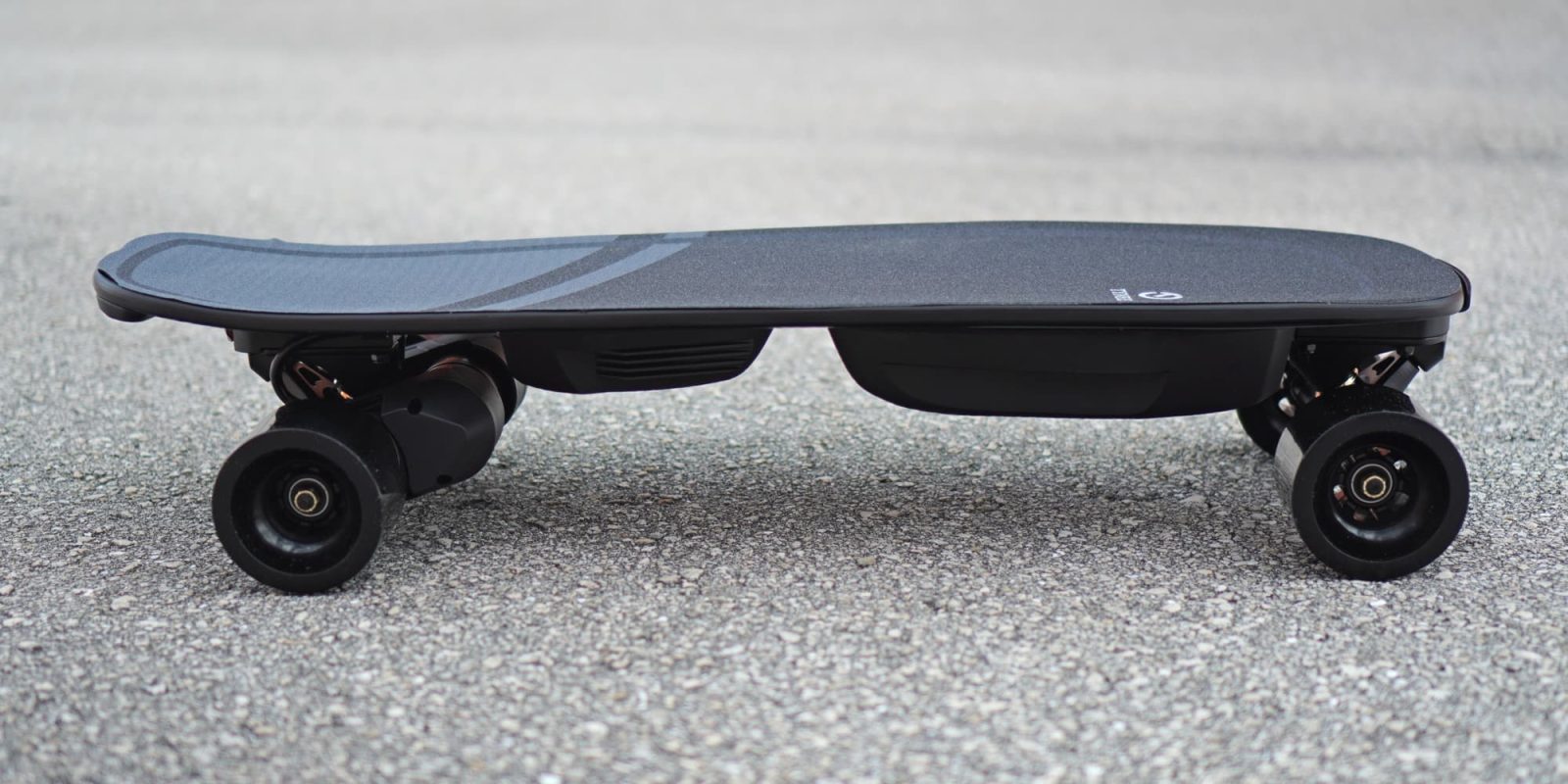Electric skateboard review: Is the Tynee Mini 2 the budget e-shortboard for you?

Electric skateboards are often overlooked in the broader micromobility ecosystem, but they’re tons of fun as both commuter EVs and recreational rides. The Tynee Mini 2 brings affordable electric shortboards to the masses, and is even more convenient than a bulky electric longboard.
The post Electric skateboard review: Is the Tynee Mini 2 the budget e-shortboard for you? appeared first on Electrek.
Electric skateboards are often overlooked in the broader micromobility ecosystem, but they’re tons of fun as both commuter EVs and recreational rides. The Tynee Mini 2 brings affordable electric shortboards to the masses, and is even more convenient than a bulky electric longboard.
I’ve always enjoyed electric longboards as a great way to cruise the city on a pint-sized electric vehicle that carries easily with me when I reach my destination.
I’ve ridden tons of them, from the expensive options to the budget level to all-terrain boards and just about everything in between.
But one thing that all electric longboards have in common is that they’re, well, looooong. It’s not quite like carrying a surfboard under your arm. But it’s also not that far from it either, especially when you’re in a crowded place.
Electric shortboards give you much of the same convenience of electric longboards, but with a shorter and lighter design that can be easily carried upright. The Tynee Mini 2 is a great example of that, and one that you can see in my testing video below. Then remember to keep reading for all the juicy details on this fun little board!
Tynee Mini 2 video review
Tynee Mini 2 tech specs
- Motors: Dual rear 850W belt-drive motors
- Battery: 12s 363Wh Molicell battery
- Range: Up to 25 miles (40 km)
- Top speed: 30 mph (48 km/h)
- Max load: 330 lb. (150 kg)
- Weight: 17.6 lb (8 kg)
- Price: $499 sale
Short on length, long on fun
There are actually two different version of the Tynee Mini 2 board available. The standard version has a smaller battery (216 Wh), while the higher ranger version lets you ride for longer thanks to its bigger battery (363 Wh).
There are technically even four versions of the board, since there are also hub motor options available in both battery sizes. But I tested the belt drive board, so we’ll stick with that model for now.
The board has a number of cool features. Immediately I fell in love with the smart on/off feature for the board. You can use the remote to turn on the board instead of having to bend over and turn the board on and off yourself from underneath. Several boards have that feature these days, so it’s not groundbreaking, but I love it as a back-saving measure.
The remote is a typical pistol grip style like you’ll find from almost every board these days – nothing special to write home about there.
I like the concave deck and kicktail design. It’s already quite nimble with the shorter wheel base, at least more nimble than the longboards I’m used to riding. But the kicktail helps you make quick and easy turns at low speed by popping up the front wheels.
The board comes with an IPX6 waterproof rating, which means you could basically spray it down with a hose or ride through heavy rain, and you’d be fine. I don’t know why you’d ever want to do that, though. The only time I’ve ever wrecked on an electric skateboard has been from hitting a puddle, and I don’t ride when it’s wet anymore because of that.
A neat little brake light is integrated right into the rear trucks. Again, it’s one of those features that I’m not sure makes a huge difference when you use it as a brake light since no cars are looking for brake lights on skateboards, but you can also leave it on or set it to flash like a bicycle light. That’s a much better feature, in my opinion, so I’m glad to see it included.
In terms of power, I was surprised how much kick this little board has. Those two 850W motors put out a combined 1.7 kW of power. With belt drive, they’re quite torquey, too. That means good pick-up and good braking power.
I’m not normally a fan of belt drive because I always seem to have belt alignment issues, but I haven’t seen any issue yet on the Tynee Mini 2. The motors and belts are a bit louder than I’m used to on my hub motor boards, but that’s to be expected, of course.
The top speed of 30 mph (48 km/h) may be accurate, but I don’t really know. I rarely go faster than 25 mph myself because I just feel most comfortable in the 20-25 range. With a shortboard, that’s doubly true. They just don’t track as nicely as my longboards. But even getting it up to 25 or so, the board definitely felt like it wanted to keep going, so I suspect that anyone looking for speed will find it.
For a board that is priced between $500-$680 depending on the current sales, it’s hard to ask much more of it than this. The Tynee Mini 2 offers good power, more speed than I need, plenty of range in the larger battery version, and even has those cool features like built-in tail light and remote on/off for the board.
With a fairly smooth ride and a comfortable deck design, I’m quite happy with what you get for the price here. I still feel better on my longboards as they tend to cruise better, but it’s hard to deny the convenience of a lightweight and easy to carry electric shortboard like this.
FTC: We use income earning auto affiliate links. More.


